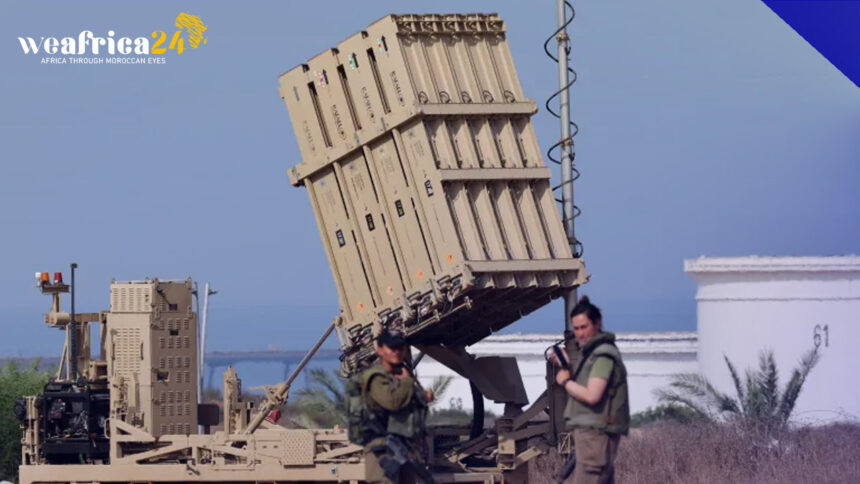The Israeli military announced that over 11,000 rockets had been launched from the Gaza Strip towards the occupied Palestinian territories since the start of the aggression on the enclave on October 7th.
Missiles are a crucial weapon for the Izz ad-Din al-Qassam Brigades, the military wing of the Islamic Resistance Movement (Hamas), and other resistance factions against the occupation.
Israel utilizes three integrated air defense systems to counteract these rockets, Iron Dome, Arrow System (David’s Sling), and David’s Sling Launcher. These systems serve various purposes, including intercepting short-range, medium-range, and long-range missiles.
The financial burden of these defense systems on the Israeli treasury is substantial, and this report will delve into the associated costs.
Israeli Iron Dome
Israel employs the “Iron Dome” system, known as “Kipat Barzel” in Hebrew, to intercept rockets launched by Palestinian resistance factions in response to Israeli airstrikes on the besieged Gaza Strip.
The Iron Dome is a network of batteries using radars to detect short-range missiles and intercept them. Each battery consists of 3 or 4 launchers with 20 Tamir missiles, controlled by a radar that guides the missile’s path, according to Raytheon, the U.S. defense giant collaborating with Israel’s defense company Rafael in producing the system.
While the exact number of Iron Dome batteries currently deployed is undisclosed by the Israeli military, as of 2021, Israel had 10 batteries stationed throughout the country. Each battery can defend an area covering 60 square miles (155 square kilometers), according to Raytheon.
Effectiveness of Iron Dome
The Iron Dome is approximately 90% effective, according to Rafael, but it can be overwhelmed if a large number of missiles are launched simultaneously, allowing some to penetrate, as has occurred frequently during the conflict.
Financial Cost of Iron Dome
The total cost of developing, manufacturing, deploying, and maintaining the Iron Dome system is undisclosed, but it likely amounts to several billion dollars, as reported by Axios.
The production cost of a complete battery is around $100 million, with each intercept missile costing approximately $50,000, according to the Center for Strategic and International Studies.
The United States has allocated nearly $10 billion for Israeli missile defense systems, including about $3 billion for the Iron Dome, according to the U.S. Congressional Research Service.
The U.S. has heavily invested in the system, helping fund its development and covering costs during times of conflict.
President Joe Biden recently announced plans to request $14.3 billion in military aid for Israel, a significant portion of which will go toward enhancing air and missile defense systems, including the Iron Dome. Biden also stated that the U.S. is working on increasing additional military assistance to Israel, including ammunition and interceptor missiles to replenish the Iron Dome.
The Israeli military reported that approximately 11,000 rockets and drones were launched towards Israel from Gaza and other fronts since October 7th.
When factoring in operational costs, including transporting, loading, personnel, and maintenance, the overall cost would significantly increase.
It’s noteworthy that the cost of a single rocket launched by Hamas is estimated to be only $600, making the Iron Dome interception rockets approximately 100 times more expensive.
David’s Sling System
The “David’s Sling” missile defense system, produced by Israel Aerospace Industries in collaboration with the U.S. Missile Defense Agency, represents the upper layer of Israel’s multi-layered air defenses. It focuses on intercepting incoming medium to long-range ballistic threats and consists of two types of interceptors: David’s Sling 2 and David’s Sling 3.
The advanced “David’s Sling 3” aims to defend against long-range missile threats, while “David’s Sling 2” targets medium-range threats.
Israel used the David’s Sling 3 missile to intercept a ballistic missile from Yemen on November 9th, marking the first practical use of this system.
Cost of David’s Sling
The cost of the interception missiles for the David’s Sling 1 and David’s Sling 2 systems is approximately $1.5 million and $2 million, respectively.
The financial aspect of David’s Sling system, including development, production, and deployment costs, remains undisclosed.







